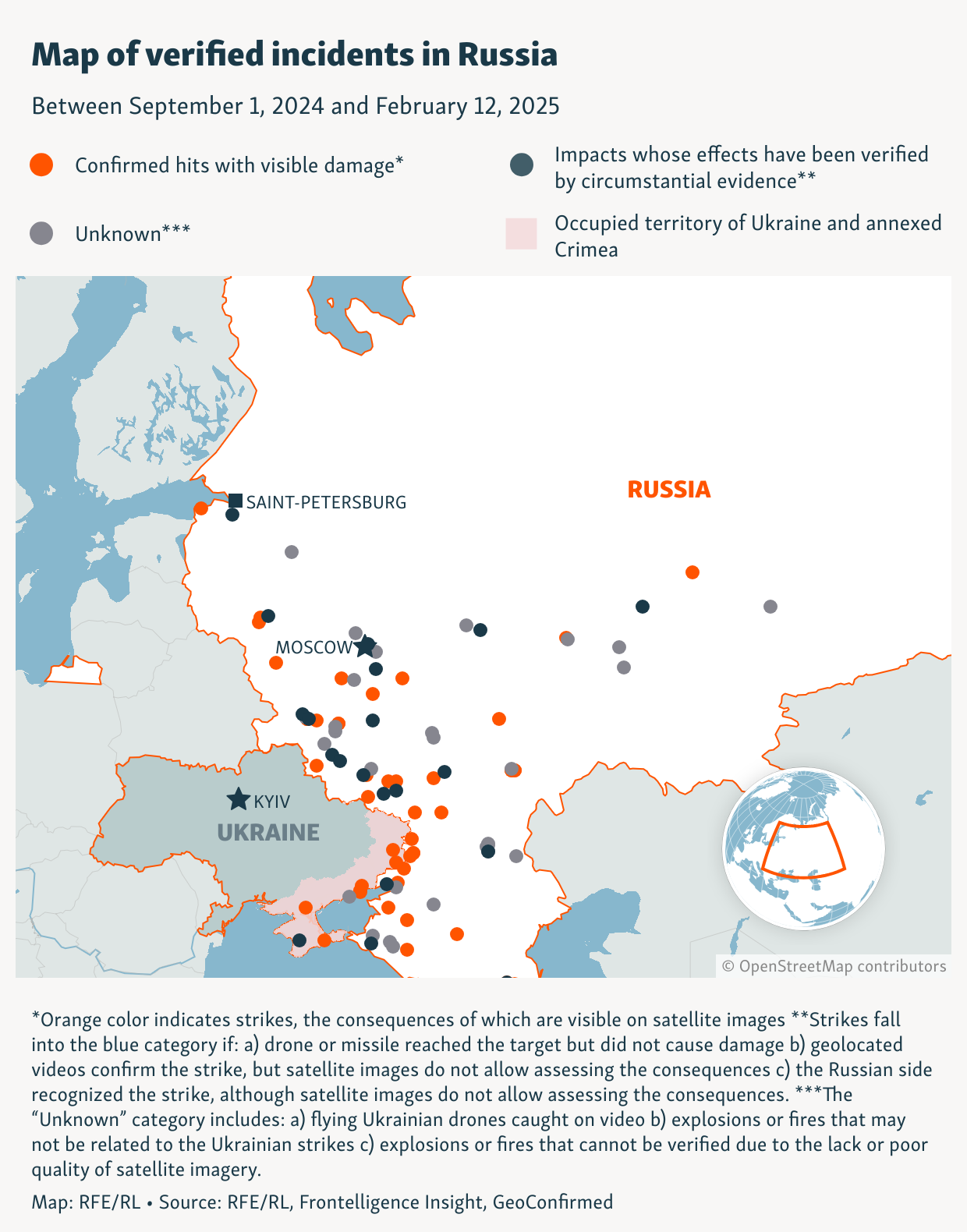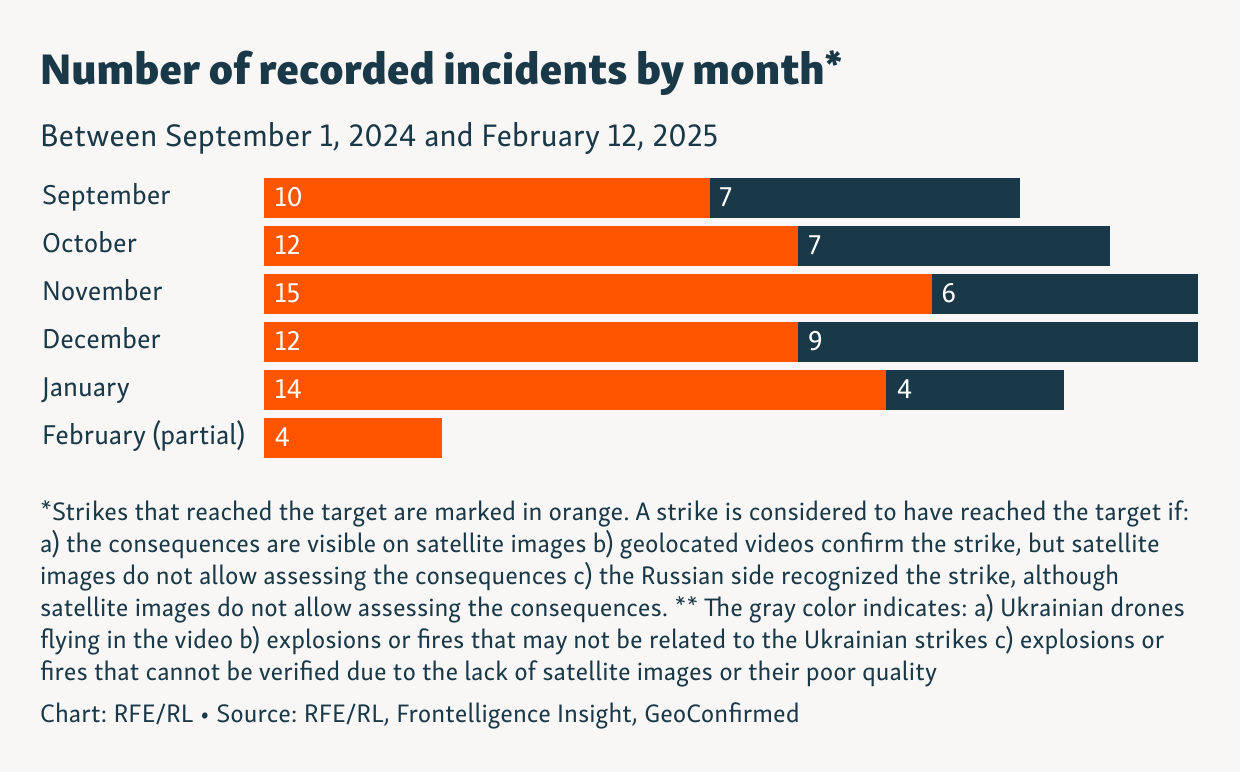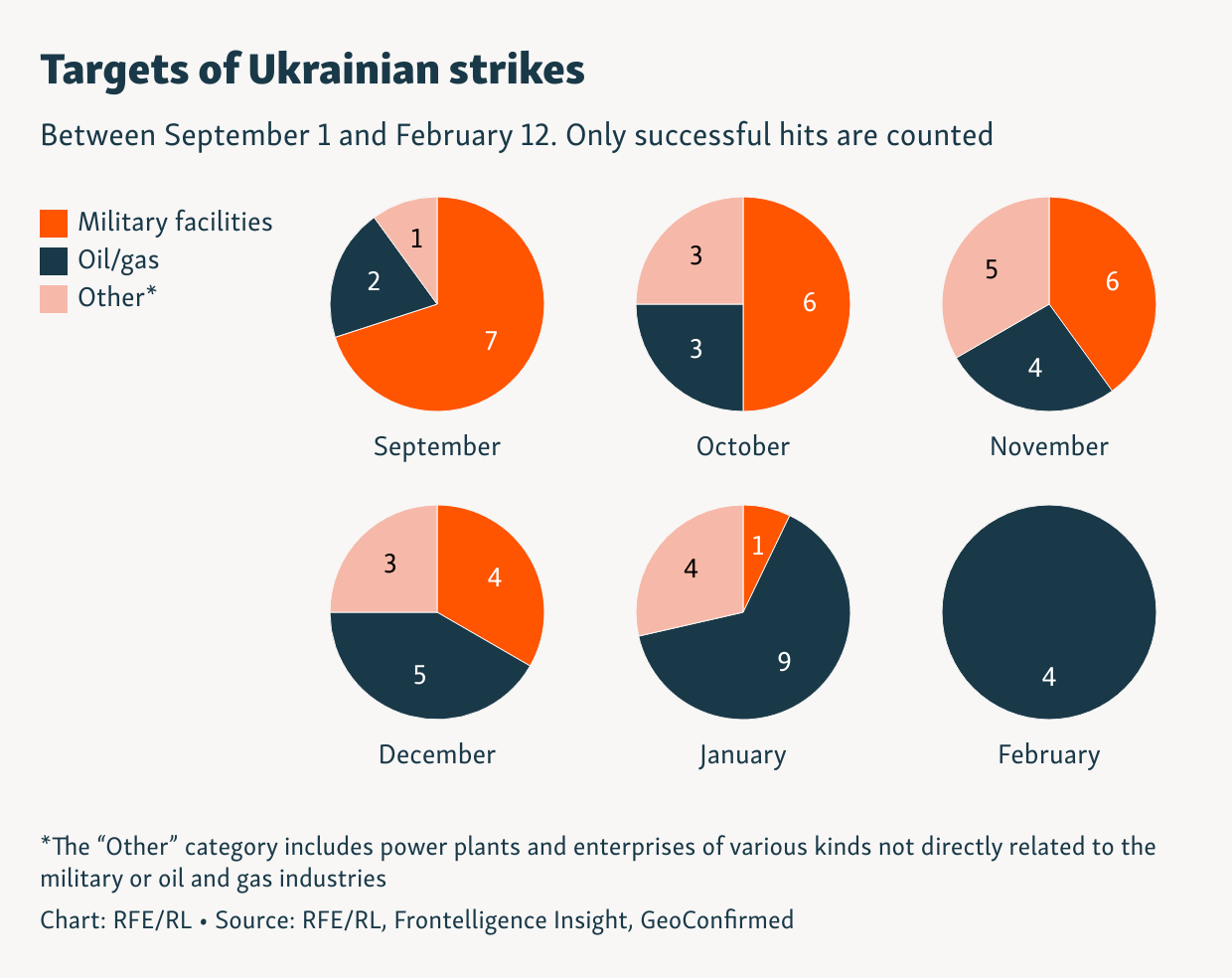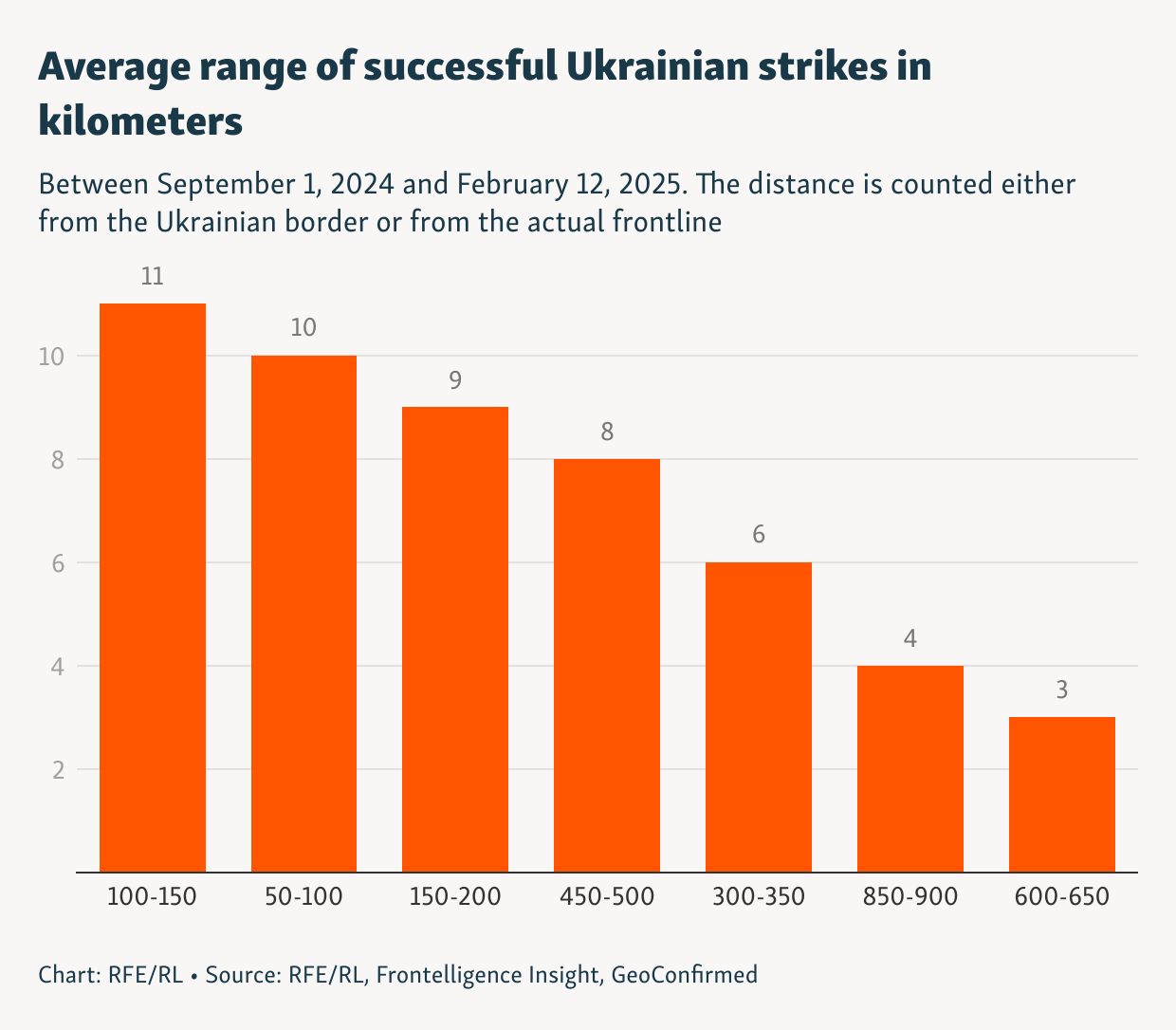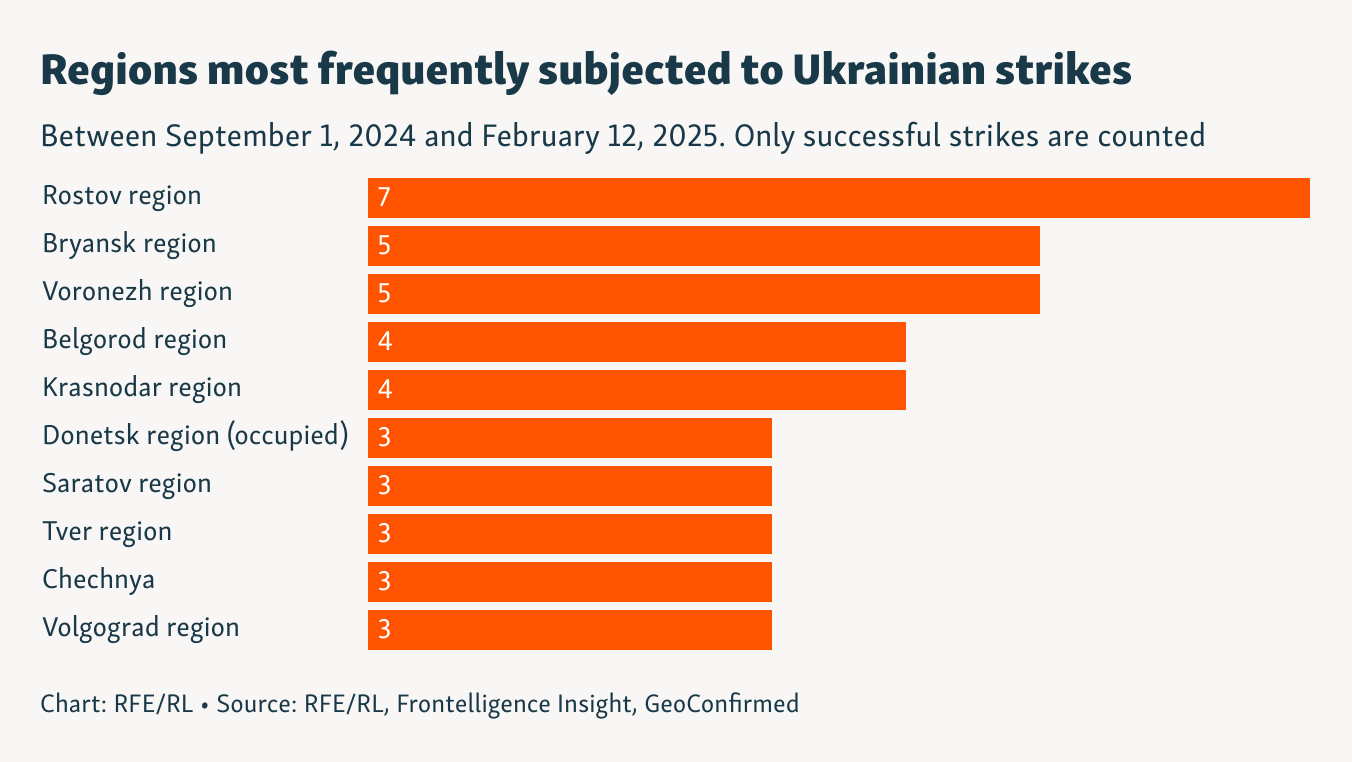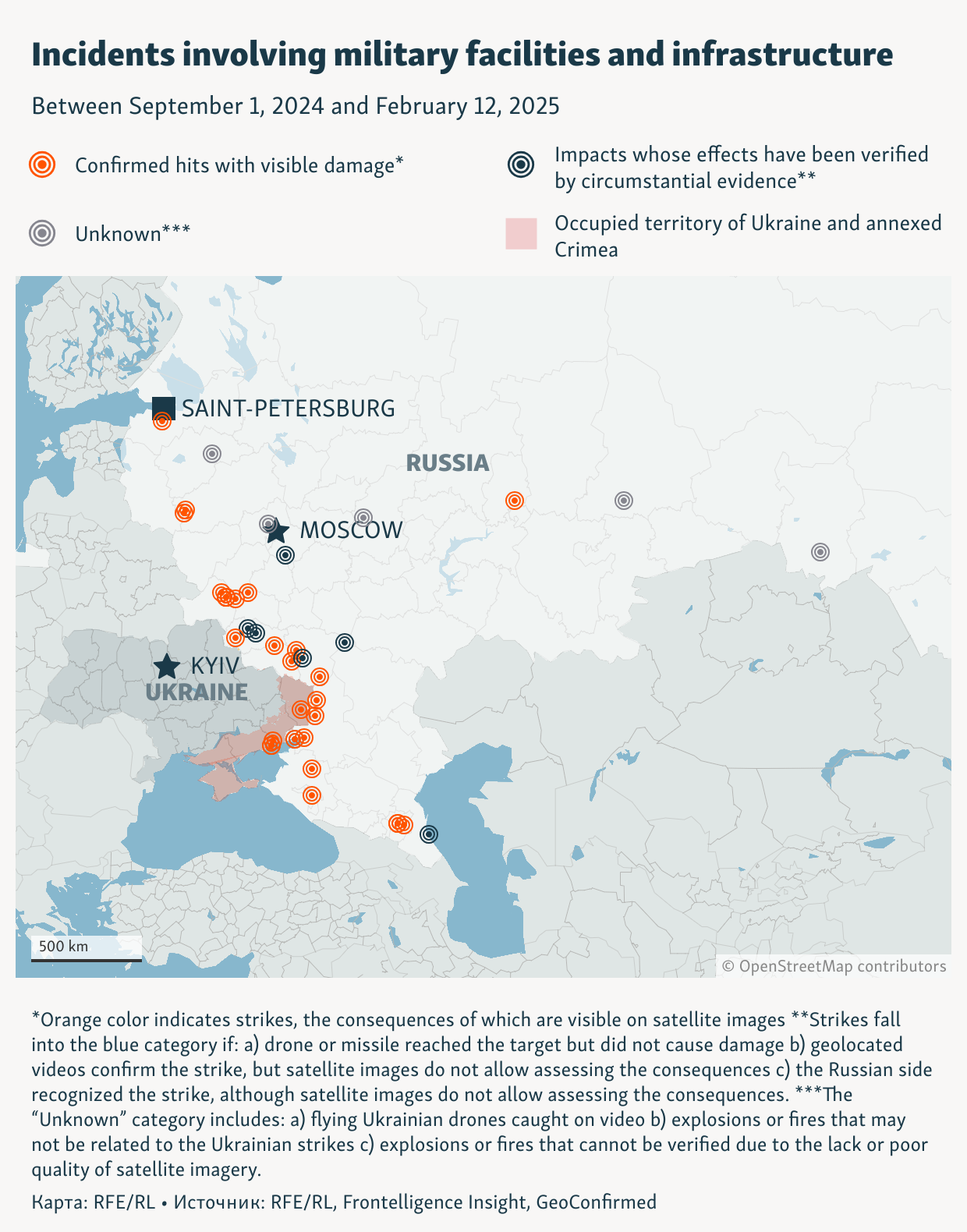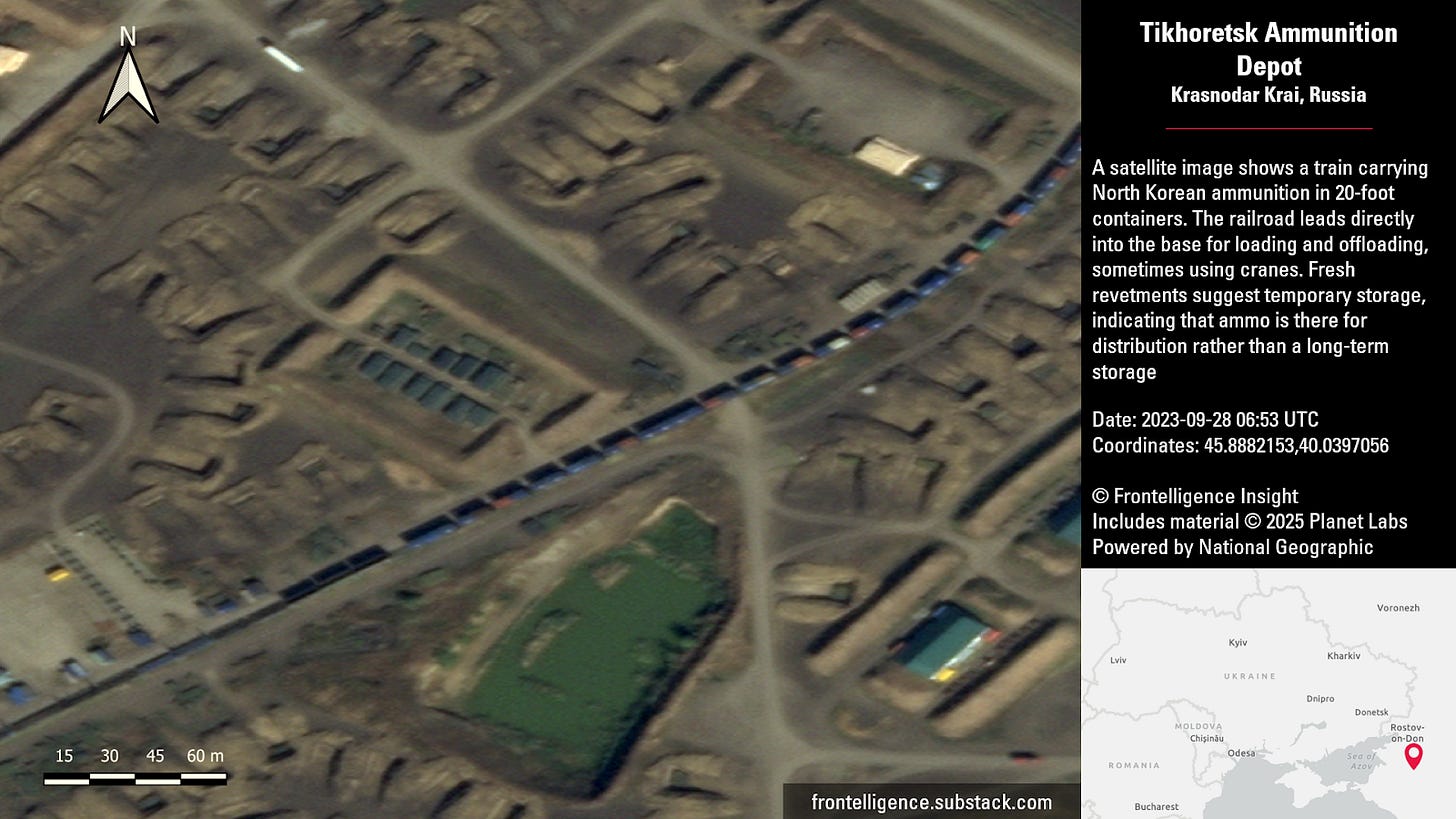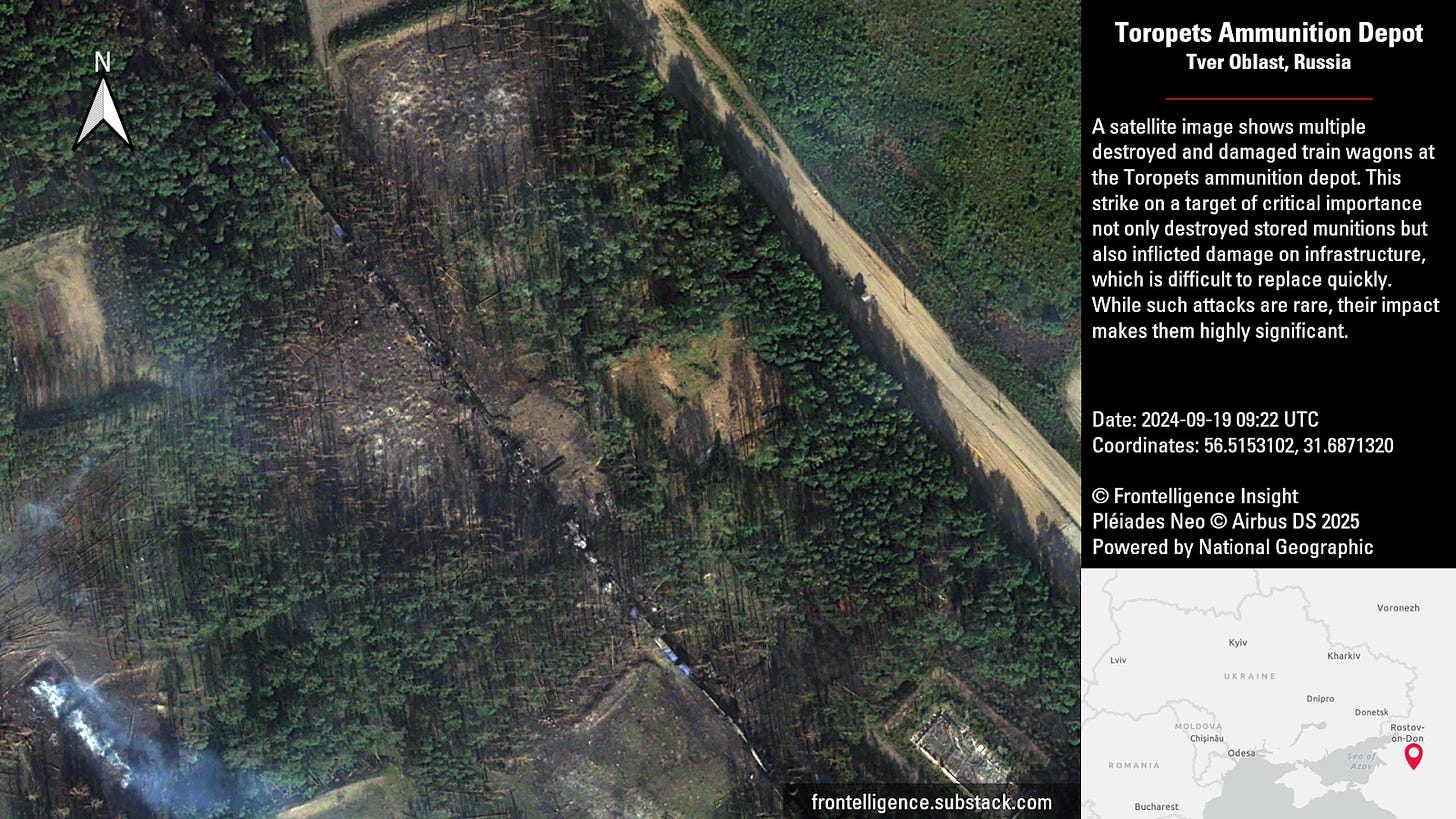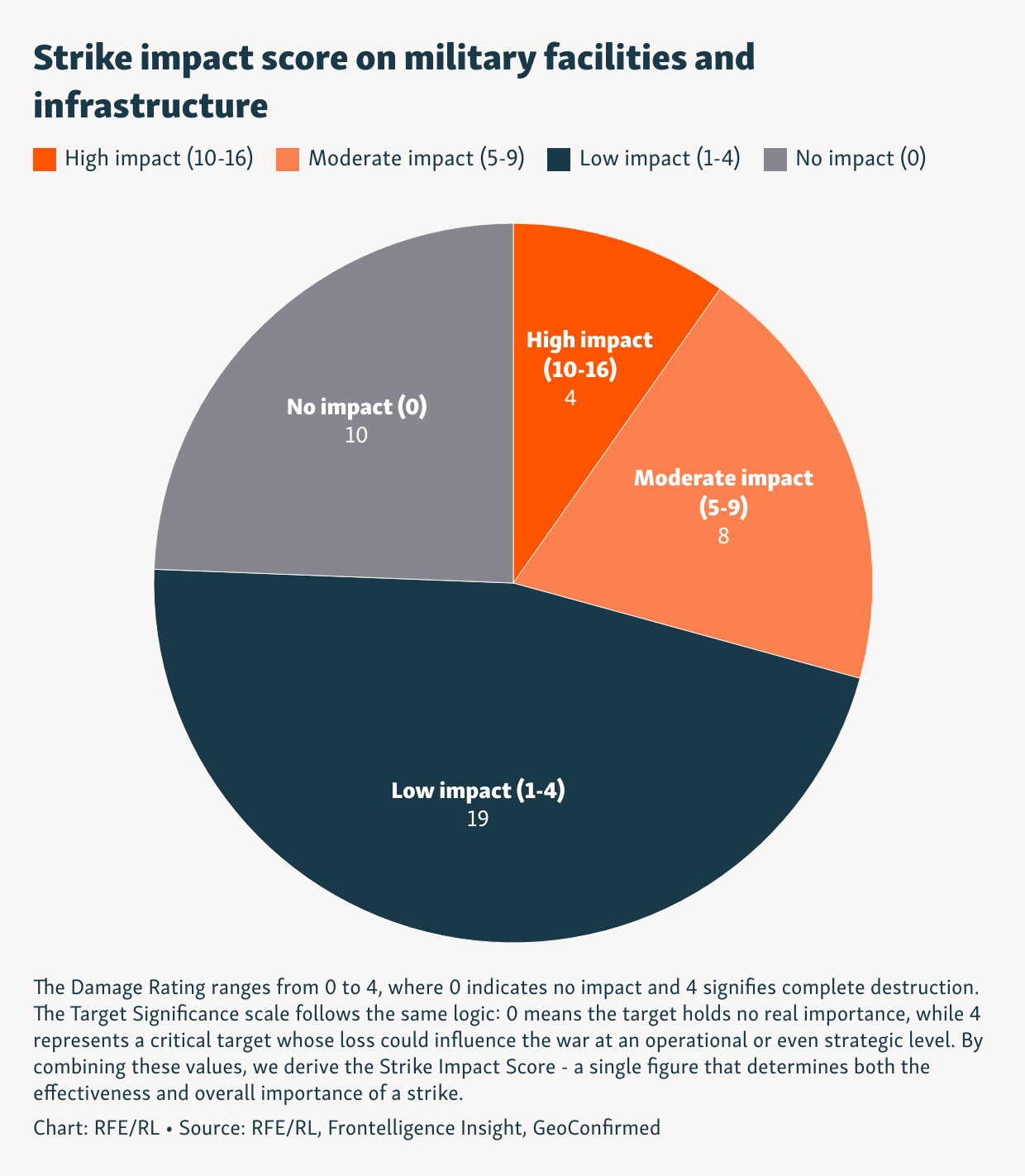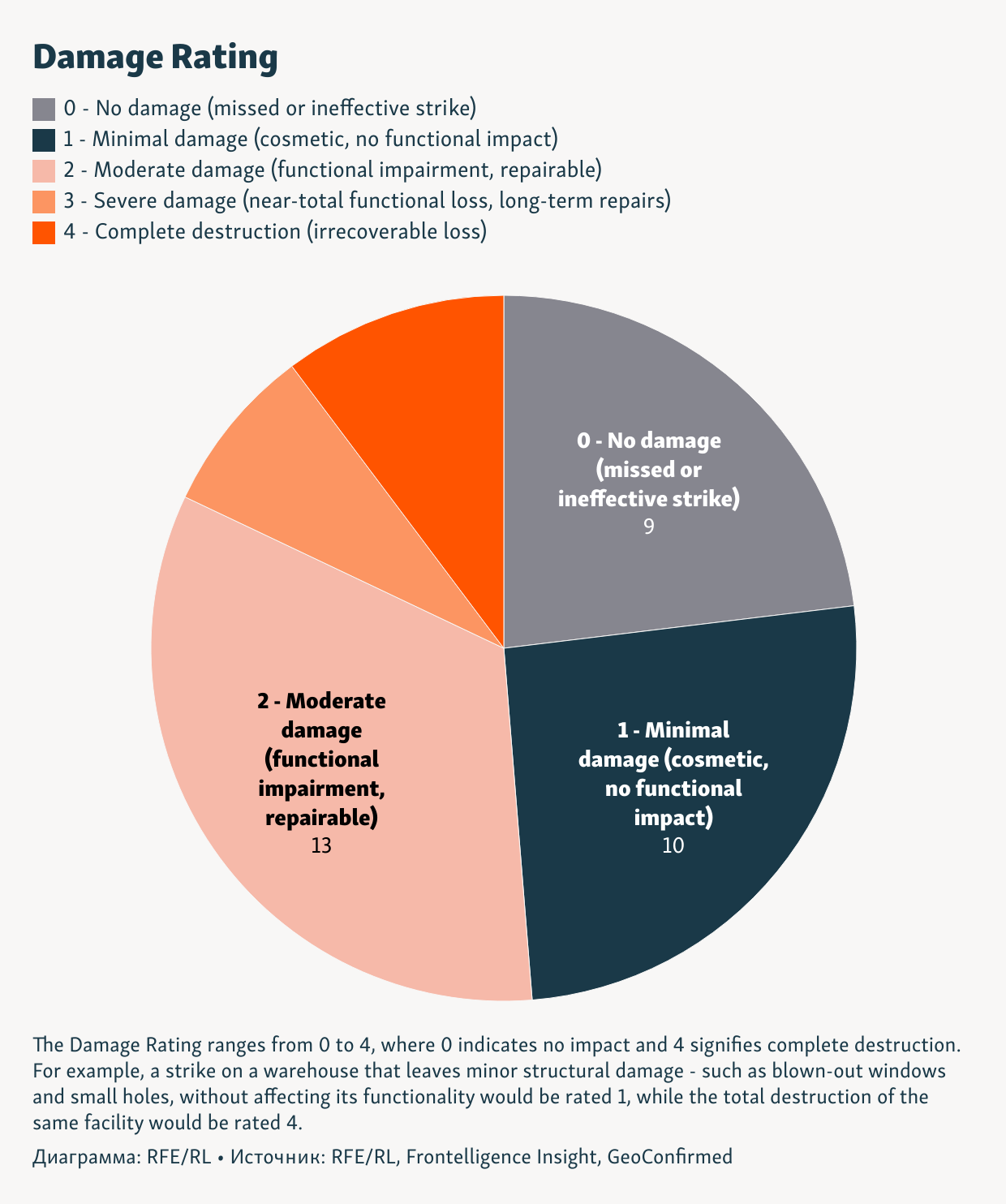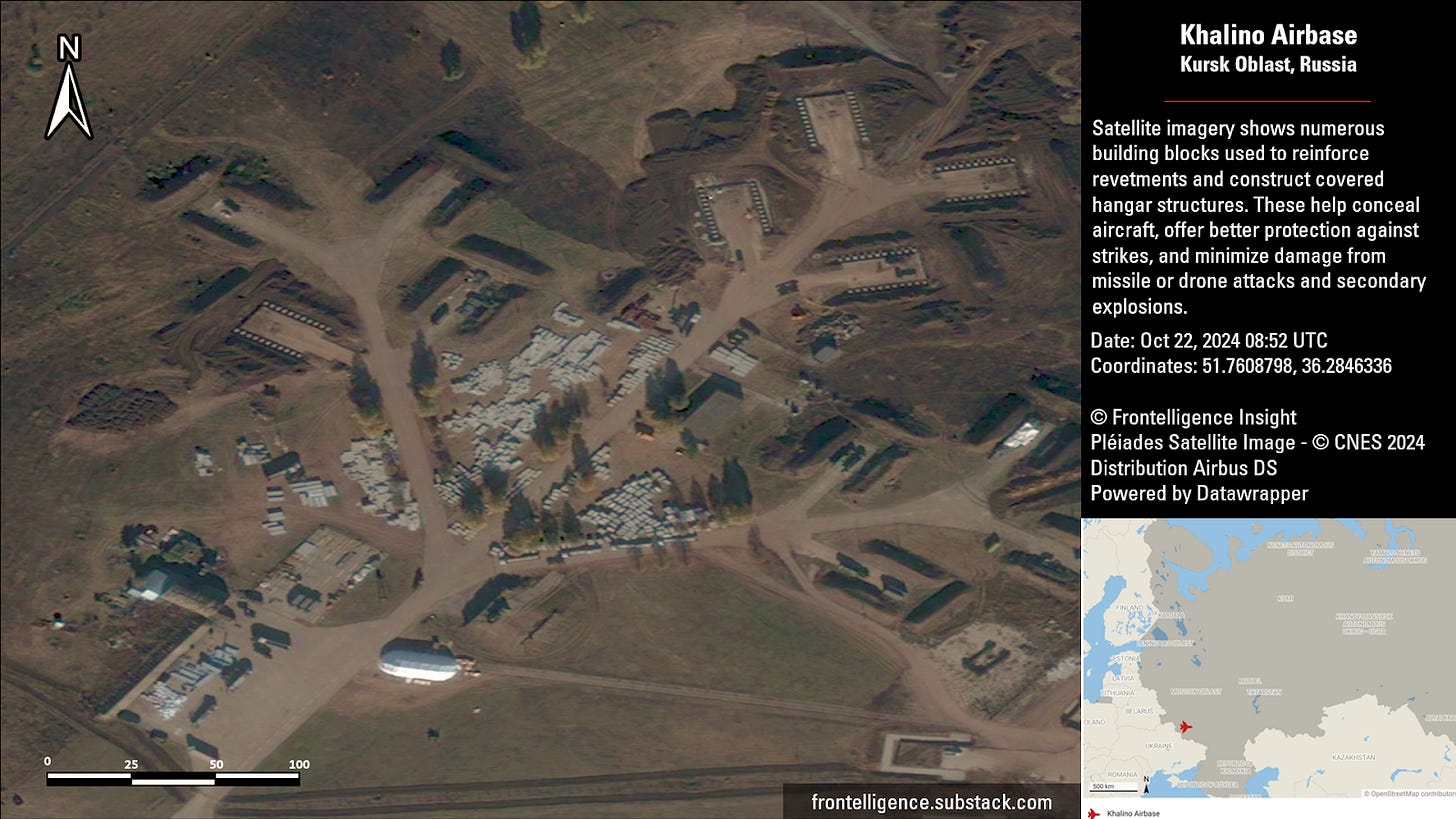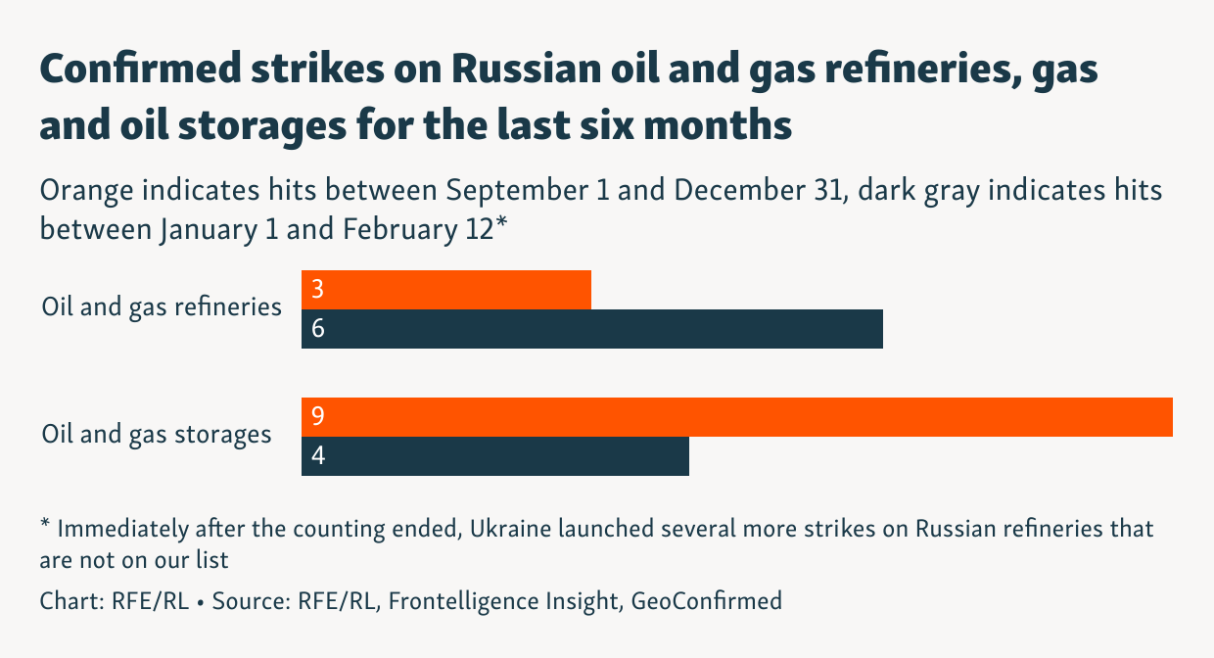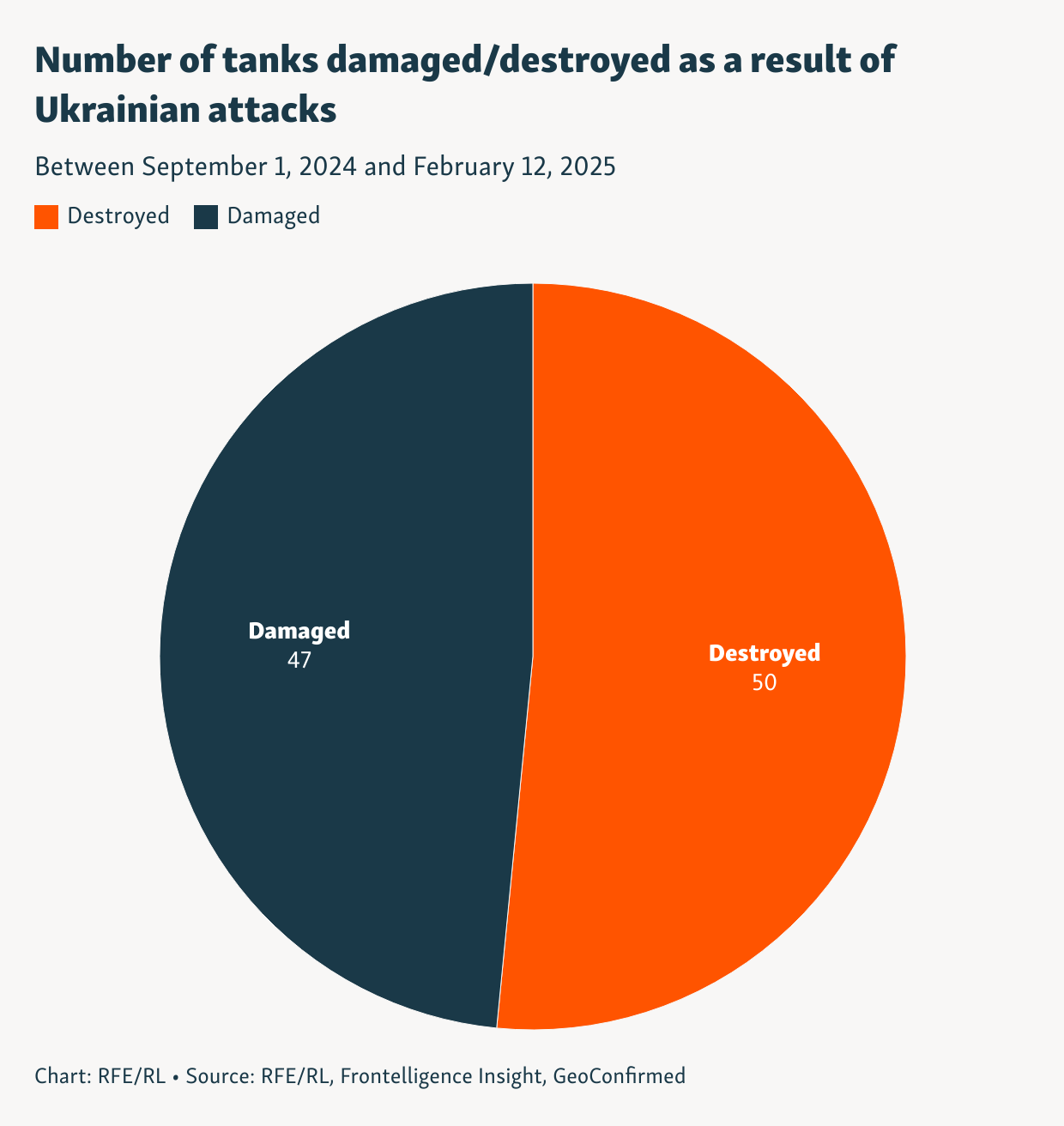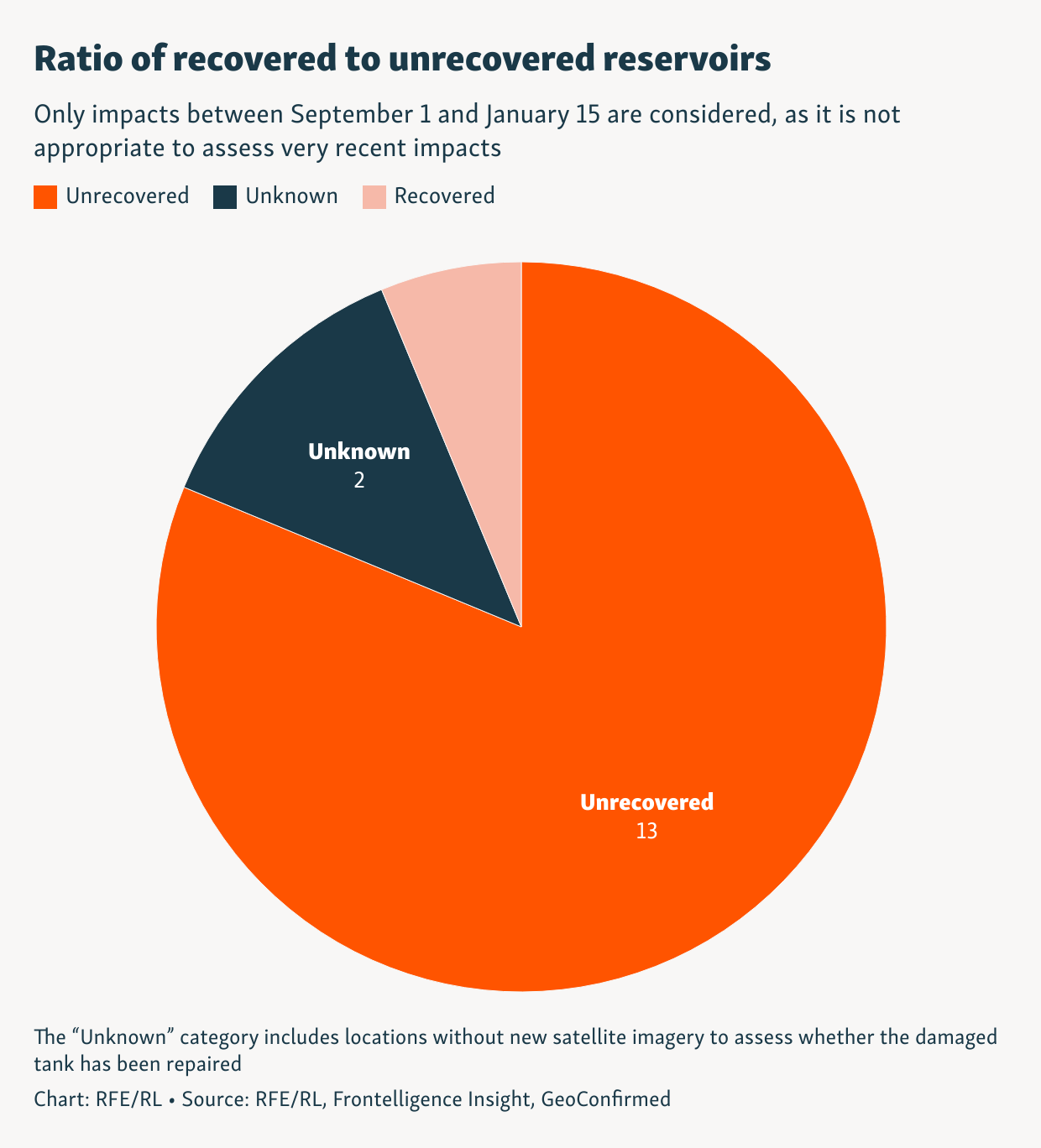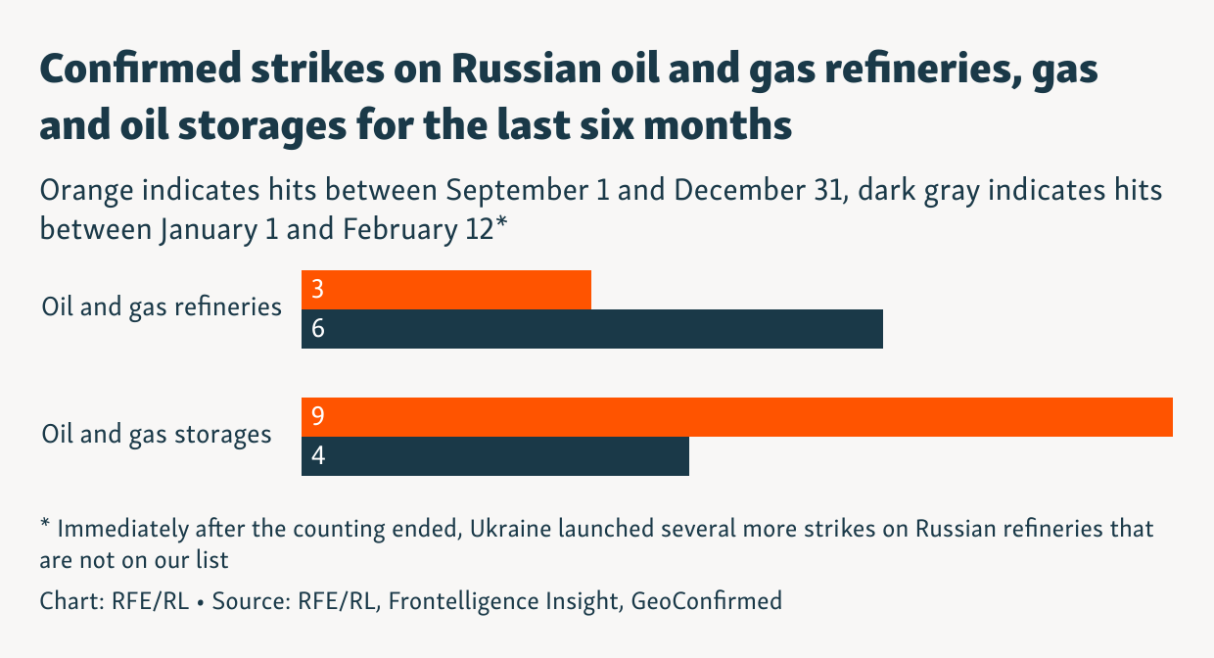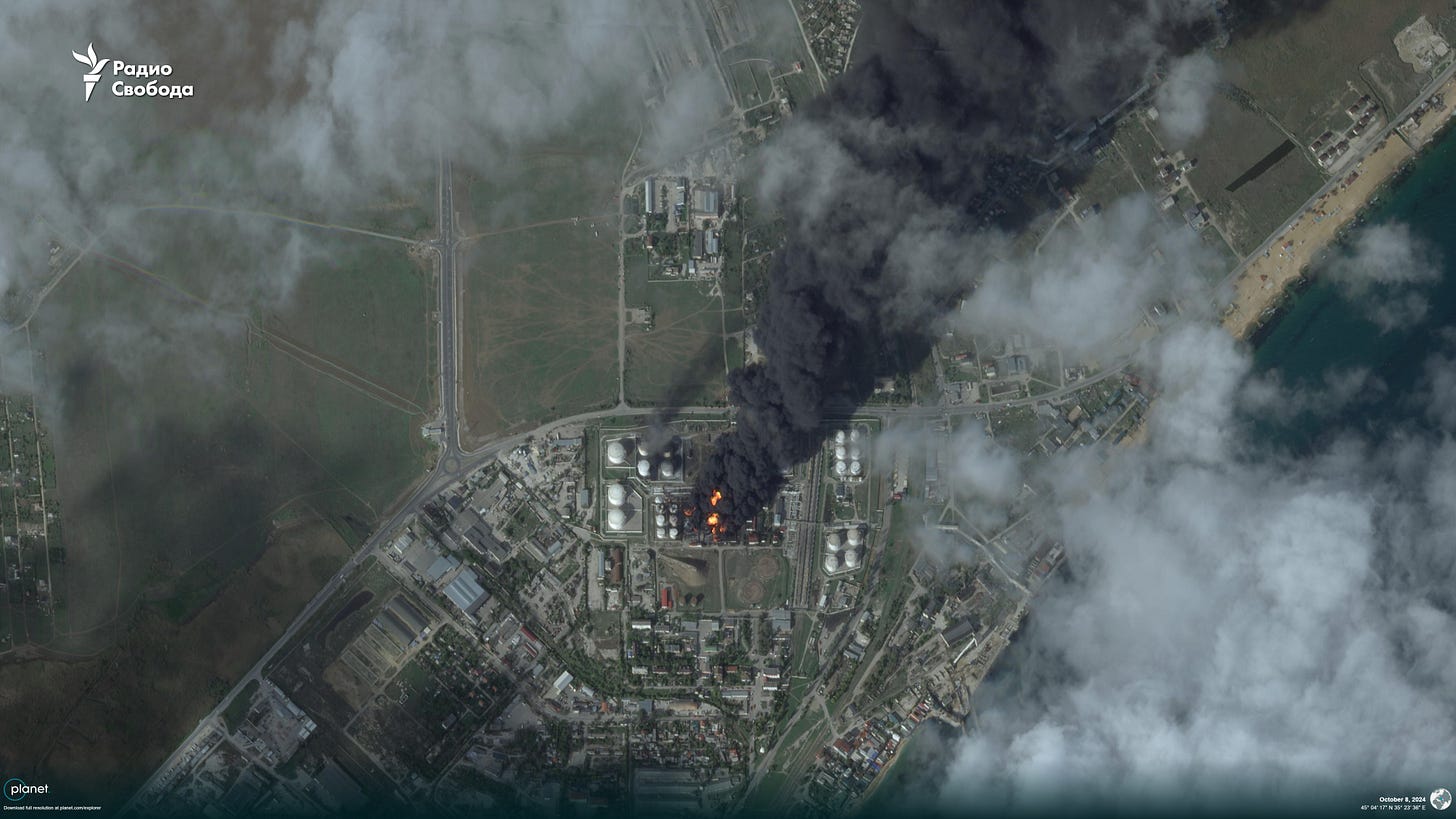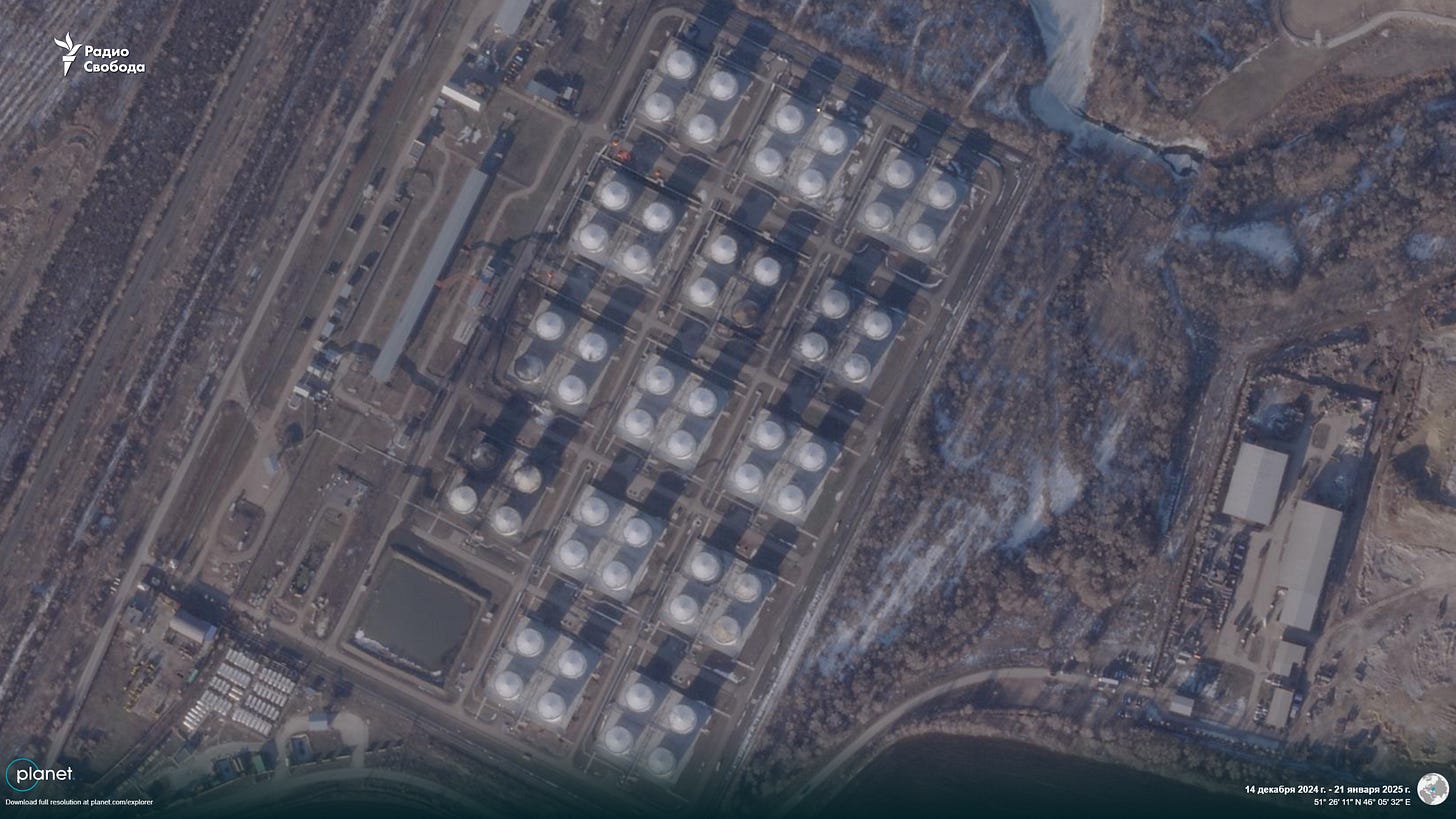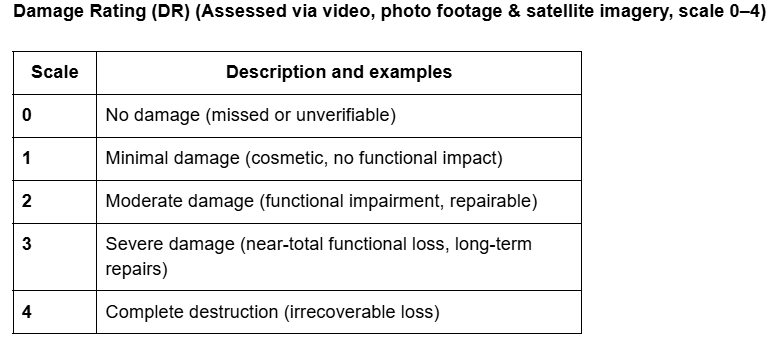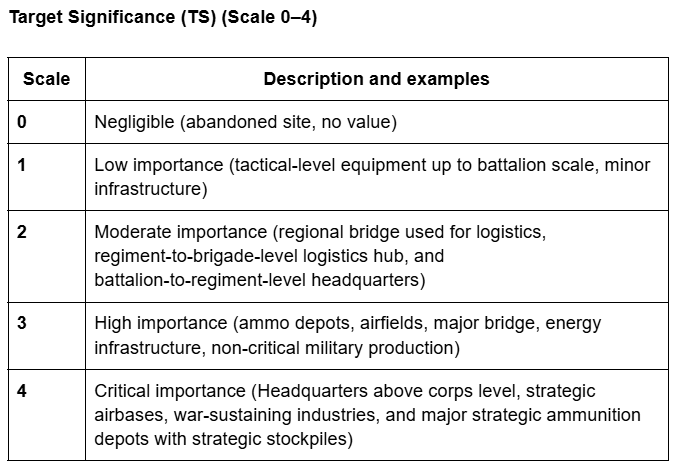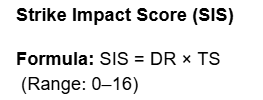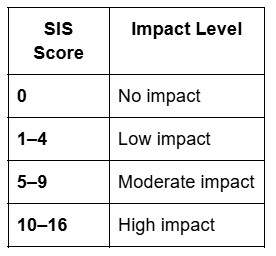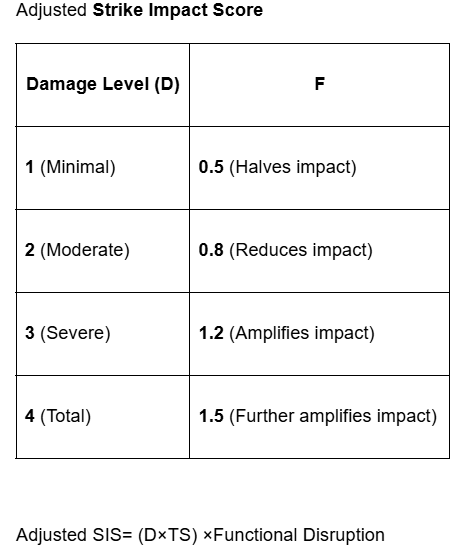Radio Liberty, together with the Ukrainian project Frontelligence Insight and a group of volunteers, analyzed more than a hundred satellite images and found out that the damage from Ukrainian strikes on the Russian energy sector over the past six months amounted to at least 60 billion rubles or $658 million (according to less conservative estimates - almost 80 billion). In addition, dozens of Russian military facilities were damaged or completely destroyed during the same period.
Table of Contents:
I. General Overview
II. Melting the Steel. Estimated damage to military targets and infrastructure
III. Burning black gold; Assessing the damage to the Russian energy sector
IV. Summary
I. General Overview
The real damage to the Russian energy sector and the economy as a whole may be higher. Experts note the $658 million number is a minimum estimate based on data that can be verified — mainly satellite images — but also video from the sites of strikes and cases where the Russian side itself confirmed the damage.
In assessing the damage caused by Ukrainian strikes on military installations, the Frontelligence Insight team analyzed the attacks in terms of their impact on the course of war, rather than the value of equipment or ammunition destroyed.
Based on data provided by the GeoConfirmed project (which geolocates various incidents in the Russian-Ukrainian war), we compiled our database, which includes attacks on Russian or occupied territories from September 1, 2024 to February 12, 2025.
In at least 67 out of 100 cases, Ukrainian strikes were successful, while in another 33 cases the result of the attacks remains unknown or it is impossible to prove Ukraine's involvement. The "Unknown" category also includes videos of Ukrainian drones flying over Russian territory with an unknown destination (it is also unknown whether they reached their target or were shot down).
The analysis is almost entirely based on the impacts verified by the GeoConfirmed service. The actual number of impacts for the specified period may be higher.
The highest number of successful strikes against targets inside Russia was recorded in November 2024.
While at the beginning of the researched period, Ukrainian strikes were more often directed at military facilities on Russian territory (mainly ammunition depots), the strikes gradually shifted to oil or gas storage facilities and oil and gas refineries. In January, two-thirds of all verified strikes were directed at them.
The most frequent distance traveled by Ukrainian drones or missiles to conduct strikes was 100-150 kilometers. Slightly fewer strikes were carried out in the ranges of 150-200 and 50-100 kilometers. This indicates that strikes are most often carried out against targets located relatively close to the Russian-Ukrainian border or front line. Strikes in the range of 450-500 kilometers are less common (there are quite a few active Russian oil refineries and military depots in this zone).
There is a clear correlation between distance and the success rate of drone strikes. The farther a drone must travel, the higher the likelihood it will be intercepted, as it encounters more air defense systems along the way. At the same time, within 650 kilometers of the Ukrainian border, numerous active targets remain, making it more practical to prioritize strikes within this range rather than routinely targeting more distant sites.
II. Melting the Steel. Estimated damage to military targets and infrastructure
Our team has analyzed Ukrainian strikes against Russian military facilities and infrastructure. Between September 2024 and February 2025, Ukraine used an increasingly wide range of weapons, including various types of drones, cruise and ballistic missiles.
Between September of 2024 and February of 2025, Ukraine has shown growing consistency in both the scale and effectiveness of its strikes deep inside Russia, employing a wider range of weaponry, including various types of drones, cruise missiles, and ballistic missiles.
September 2024 stands out as the most successful month, marked by direct hits on some of Russia’s largest ammunition depots in its western regions: key stockpiles that had sustained frontline operations since 2022. Notably, strategic depots in Toropets and Tikhoretsk played a key role in supplying Russian forces with 120mm and 82mm mortar rounds, 122mm rockets, small arms ammunition, various missiles, and explosive materials.The destruction of the Toropets depot alone is estimated to have resulted in the loss of 30,000 to 160,000 tons of munitions, dealing a tangible blow to Russian logistics and frontline supply chains.
Tikhoretsk Ammunition Depot, in particular, became a key storage hub for North Korean artillery ammunition deliveries starting in 2023. Its infrastructure, like most major Soviet-era ammunition depots, was specifically designed with a rail connection and loading/unloading platforms equipped for more efficient transfer. Before these deliveries began, the facility was even expanded to accommodate shipments from North Korea.
When the Tikhoretsk ammo depot was completely destroyed by a Ukrainian long-range strike, the impact extended beyond the ammunition loss, also damaging the railroad infrastructure.
The ability and time required to repair or replace a damaged target directly influence the key metrics used in this analysis - Target Significance. In cases like the Toropets and Tikhoretsk ammunition depots, Target Significance was not determined solely by the tonnage of ammunition stored but also by how quickly the site could be restored or replicated - if at all.
The complete destruction of major ammunition depots, forces the rerouting of supplies to other depots, adding distance, increasing delivery times, and further straining an already overstretched logistical network.
While estimating ammunition losses in tonnage can help gauge how long a unit might be deprived of supplies and the broader impact on the war effort, assessing the effects of Ukrainian drone strikes, and later missiles strikes on diverse targets: factories, warehouses, airbases, command posts, and training facilities is far more complicated and can’t be measured in ammo tonnage.
To evaluate the effectiveness of long-range strikes, we developed and tested a straightforward assessment model based on two key metrics: Damage Rating and Target Significance.
The Damage Rating ranges from 0 to 4, where 0 indicates no impact and 4 signifies complete destruction. For example, a strike on a warehouse that leaves minor structural damage - such as blown-out windows and small holes, without affecting its functionality would be rated 1, while the total destruction of the same facility would be rated 4.
The Target Significance scale follows a similar logic: 0 means the target holds no real importance, while 4 represents a critical asset whose loss could influence the war at an operational or even strategic level. For instance, if the previously mentioned warehouse stored non-essential supplies such as belts, socks, and hats for a company-sized unit, its significance would be rated 1. However, if the same warehouse contained a six-month stockpile of artillery ammunition for an army group, its significance would be rated 4.
By multiplying these values, we derive the Strike Impact Score: a single figure that reflects both the effectiveness and importance of a strike. Additionally, we use the Adjusted Strike Impact Score for large or complex structures where damage to a single component can either cripple an entire operation or, conversely, leave overall functionality intact despite multiple destroyed elements. Take, for example, the strike on the Karachev GRAU depot in Bryansk Oblast in October 2024. This was a high-profile target due to its stored ammunition and logistical infrastructure. The strike successfully destroyed two buildings, eliminating their contents. However, the broader ammunition depot and its critical infrastructure remained intact.
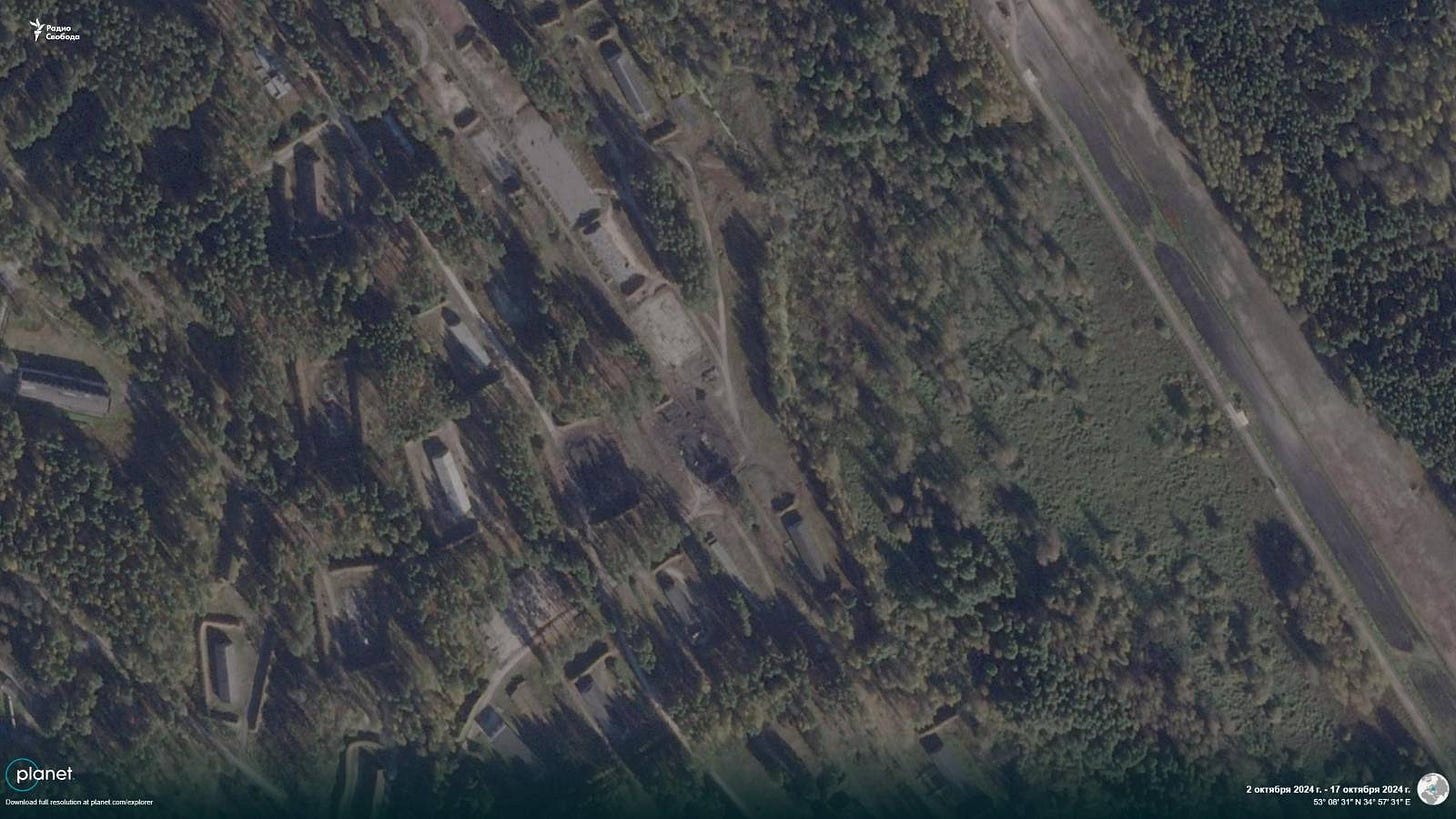
In such cases, we apply an adjusted formula that evaluates the impact on the entire complex rather than just the affected structures. While the destruction of two buildings was a direct loss, it did not significantly degrade the depot’s overall functionality. As a result, the strike received a low impact score, which was further supported by satellite imagery showing continued activity at the depot, indicating no operational disruptions.
By applying our evaluation model, we determined that more than half of the recorded strikes between September and February had limited impact. This assessment does not account for interceptions, debris falling on non-military or non-industrial sites, or drones that failed to reach their targets. As a result, the actual number of low-impact, ineffective, and failed strikes is likely higher than displayed on the graph.
The high concentration of successful strikes on military targets in September - November, followed by a noticeable drop in later months, does not necessarily suggest a lapse in consistency or a sudden degradation of capabilities. More likely, it’s a result of a deliberate shift in targeting priorities, with increased emphasis on oil and energy infrastructure.
Intelligence capabilities and response times have notably improved in stark contrast to previous years. A case in point is the Shahed drone storage and launch site in Oryol Oblast, which began construction in August 2024 and was completed by December of the same year.
Timelapse footage of the facility’s construction, shared by Mark Krutov:
Remarkably, as soon as the facility was operational, Ukrainian forces carried out a precise strike, targeting one of the reinforced bunkers likely used for storing loitering munitions. The site was assessed with a Target Significance of 3 and a Damage Rating of 2, placing it at the lower end of the moderate Strike Impact Score scale. A precise strike disabled one of 15 bunker structures, which remains under reconstruction. However, the facility continues to operate and has not been destroyed or abandoned.
Despite modest results of the strike, the fact that Ukraine was not only aware of the site’s construction in this remote and unconventional location but also knew its purpose, and precisely when it was completed and put to use, demonstrates the effectiveness of intelligence gathering and reaction time, whether through its own resources or those of Western partners.
An analysis of Damage Rating, or in other words, the extent of destruction inflicted on a target, shows that more than half of recorded strikes on military facilities and infrastructure resulted in moderate to low damage. One contributing factor, as our team has assumed, is the relatively small warhead size of certain Ukrainian drones, such as the Liutyi, which is comparable to the Russian-Iranian Shahed-136 (Geran-2). Given the long distances these drones must travel, increasing their warhead size would require adjustments to weight, fuel capacity, and overall design.
While video footages, particularly captured at night, often show explosions of fire, these visuals can be misleading. The effect is frequently amplified by the drone’s fuel igniting upon impact, but the actual structural damage tends to be limited unless secondary explosions or fires occur. Although our team was unable to conduct interior damage assessments, in many cases, we were able to determine through satellite imagery or open-source materials whether targeted buildings remained operational and how long repairs took.
According to Michael Kofman, a senior fellow in the Russia and Eurasia Program at the Carnegie Endowment for International Peace, who recently returned from a field trip to the Ukrainian frontlines, the reason why the impact of long-range strikes on the battlefield has not always met public expectations, aside from a few exceptions, can be attributed to deeper issues:
"The battlefield impact was most visible in cases where Ukraine went after ammunition, and C2. Unfortunately, strike campaigns using ATACMS and air launched cruise missiles were often out of sequence with combat operations. Decisions on missile availability, numbers provided, and restrictions on use, had a poor relationship to the requirements of major offensive or defensive efforts. Long-range strikes were an important piece of the puzzle, affecting how Russian forces operate, but by themselves were not decisive, and could not solve the challenges observed on the modern battlefield. Both sides struggled to overcome a prepared defense backed by mass precision. Consequently, these weapons had shaping effects on enemy forces, but Ukraine was often not in a position to capitalize on them, and expectations that these would be game changing weapons tended to exceed the impact observed”
In November 2024, Ukraine was granted permission to use ATACMS deeper inside of Russia. As a result, beyond the now-routine drone strikes, new weapons such as ATACMS were introduced in an expanded role, with less geographical restrictions. ATACMS, along with Storm Shadow/SCALP strikes, successfully hit their intended targets, including air defenses at Khalino Air Base, disrupting air operations, as well as a successful strike on a command post in Maryino, eliminating senior officers.
Previously, our team estimated that Ukraine had several dozen ATACMS missiles remaining- insufficient to critically damage Russian forces and their logistics. As Michael Kofman explains, part of the problem is that the salvo sizes Ukraine could generate, relative to Russia’s interception capabilities, made it difficult or costly to achieve some of the desired effects.
This issue is compounded by the Western approach to ATACMS use and deliveries, as well as decisions to employ them against targets in Crimea in 2024 without linking those strikes to a specific follow-up operation that could have fully exploited the window they created. This led to a depletion of ATACMS stocks by fall 2024, a few months before Ukraine received expanded permission on ATACMS strikes.
"There was inconsistency in the Western approach. For example, denying ATACMS missiles ahead of the summer 2023 offensive, then encouraging an ATACMS strike campaign against Russian forces in Crimea in 2024 that spent significant resources, but did not link to any offensive or follow-on operation that year," explains Michael Kofman.
By 2024, Russian forces had become far more familiar with Ukraine’s strike capabilities than in 2022, when they initially operated under the assumption that Ukraine lacked the systematic means to hit beyond artillery range. As a result, they were unprepared for the highly effective introduction of HIMARS, which inflicted devastating losses. As new weaponry was introduced, albeit in relatively small quantities, since 2022, Russian forces continuously adapted. By 2024, the number of easily exploitable targets had been reduced significantly compared to 2022. For example, Khalino Air Base, which was struck by ATACMS in November, had already been undergoing reinforcement upgrades since October 2024.
While large strategic facilities storing hundreds of thousands of tons of ammunition cannot be fully hardened without years of preparation, Russia has implemented lower-cost but effective countermeasures to mitigate the impact of strikes on other key targets: such as headquarters and tactical ammunition depots - significantly reducing their vulnerability compared to 2022.
III. Burning black gold; Assessing the damage to the Russian energy sector
According to Radio Liberty's calculations, Ukrainian drones struck oil and gas production facilities and natural resource storage sites at least 25 times in the six months covered by this study.
Will Thiel, a chemical engineer with 32 years of experience in oil and gas refining, exploration and production, spoke to Radio Liberty about the differences between refineries and tank farms.
Oil depots are facilities containing only tank capacity and designed to store or transfer raw materials and products from one mode of transportation to another, while refineries are a complex set of not only different tanks (for crude, intermediate and finished products), but also process units (rectification columns, reactors, separators, cracking units) for chemical or physical refining of crude oil into more valuable products, which are divided into light products (gasoline, kerosene, diesel and jet fuel). Refineries also have rail and road terminals for loading and unloading tankers and other supporting infrastructure such as pipelines, pumps, and power plants.
As recently as 20 years ago, the engineer notes, Russian refineries existed mainly to supply the domestic market and were not oriented toward exporting products. Russian economist Vladimir Milov explains that in Soviet times, refineries mainly produced fuel oil (for heating) and diesel fuel, while production of gasoline and other light petroleum products was low due to the low level of motorization in the country.
After that, deep modernization and expansion of refineries began: a number of refineries were rebuilt, and now they are truly modern refineries with high oil refining depth (up to 100%) and high yields of light petroleum products (around 80% and higher), Milov notes. At the same time, many Russian refineries still do not meet Western standards, says Will Thiel: for example, they do not use huge crude oil storage tanks, as in Western countries, for 60,000 tons, and there are no large storage tanks for finished products, as in foreign refineries, so the vulnerabilities of the Russian oil industry are constantly loaded logistics.
Will Thiel summarizes that Russia has no large refineries in the Western sense, but many small and medium-sized refineries, among which there are both rather outdated (in the south of Russia) and modern (in the European part of Russia and Western Siberia).
Oil transfer complexes or oil pumping stations (OPS) are logistical transshipment points. One such point, the Andreapol pumping station in the Tver region (an important part of the Baltic Pipeline System-2), has been attacked twice recently by Ukrainian drones, in January and February. Despite the fact that the station is not visually damaged on fresh satellite images, and the images from the period after the January strike are of very poor quality, Bloomberg writes that the damage caused the station to stop pumping oil to the Baltic port of Ust-Luga, an important hub for Russian oil product exports, for a period of time.
Gas processing plants (in particular, the Astrakhan gas processing plant attacked in February) are designed to process natural gas and gas condensate, separate valuable hydrocarbon fractions, and produce gas sulfur.
Compared to oil storage facilities, gas storage facilities were attacked less frequently: this is most likely due to the low cost of gas. According to our calculations, the only attack on a gas storage facility - the Kazan LPG cluster base - in January 2025 destroyed three gas holders and damaged two others with a maximum volume of 170 cubic meters each (the tank itself is designed for 200 cubic meters, but the maximum volume of products stored inside usually does not exceed 85%), and the damage caused can be estimated at a maximum of $74,000. The value of potentially destroyed or damaged gas does not exceed $500, most of which is the cost of building the storage facilities themselves or six and a half million rubles. At the same time, the attack on the oil storage facility in Osentsy, Perm Krai, which was similar in its insignificant scale of destroyed or damaged products (465 cubic meters), caused almost four times more damage - it can be estimated at 250 thousand dollars.
Based on satellite imagery, we analyzed the damage to Russian oil and gas plants and storage facilities. The analysis includes only an assessment based on the damage visible from satellite imagery, i.e. destroyed or damaged tanks. Attacks on different oil or gas refineries will be assessed separately because of their specificity: often the damage may not be visible on satellite imagery, although their damage is confirmed by indirect factors.
According to Radio Liberty's calculations, Ukrainian strikes have destroyed a total of 50 reservoirs in the last six months and damaged 47 others. We have formulated three hypotheses: all destroyed tanks were filled with oil or other products completely (i.e. 90% of the total volume), half (45%) or one-sixth (15%).
One cubic meter is 6.29 barrels of oil. Having multiplied the total volume of potentially destroyed reservoirs by this value, we multiplied the resulting number by the price per barrel of URALS oil as of February 12, 2025 - $70.01.
Thus we got the cost of all potentially destroyed oil for the last six months. To it we added the cost of construction of all destroyed tanks, which was provided to us by anonymous Russian specialists: a ton of metal construction in Russia now costs 140 thousand rubles, and the cost of work is 400 thousand rubles per ton. For example, the approximate weight of a vertical steel tank with a volume of 5000 m3 is 125 tons. Thus, the approximate average cost of such a tank (without taking into account logistics and requests of a particular customer) will be 67 million rubles or $747,000.
If the two values are added together, the total damage in monetary terms can be obtained. The calculation error described in the table is due to the inability to always accurately determine the size of the tank from satellite imagery. Some tanks may not differ in diameter (in case of vertical tanks) or length (in case of horizontal tanks), but may have different heights. In this case, we took into account the averaged values, which form a small error that can be added to or subtracted from the total value.
The largest strike on an oil storage facility in terms of total damage occurred on October 7. In Feodosia (annexed Crimea) 11 tanks with a total volume of 69 thousand cubic meters were destroyed. According to our estimates, the maximum monetary damage (the cost of oil and construction of the tanks) could exceed$37,500,000 or 3.3 billion rubles.
In the vast majority of cases, not only the destroyed tanks, but also visually damaged (sometimes slightly) storage facilities were never recovered from the impacts.
The only exception is the tank damaged in the January attack at the port of Ust-Luga in the Leningrad region. The roof of the RVS-30000, which was slightly damaged, was repaired within a month.
Radio Liberty economic observer Maxim Blunt suggests that Russian companies are in no hurry to restore reservoirs in anticipation of the end of the war in Ukraine.
Oil industry experts interviewed by Radio Liberty confirm that Russian oil companies may fear repeated strikes on facilities. They may also be hampered in their recovery by sanctions, overloaded production facilities and labor shortages, according to the experts interviewed.
Building new tanks can take months (with no guarantees that there will be no repeated strikes), and repairing damaged tanks is a rather labor-intensive process that requires the appropriate qualifications of specialists: the damaged section must be cut out, replaced with a new plate, welded and painted.
In the end there may simply be no need for it, experts say. Russian refineries are deliberately reducing output because of the Ukrainian strikes, and finished products are almost immediately redistributed or sent to oil tankers, so the existing storage tanks for limited production with high throughput capacity are still sufficient.
"In general, if they really wanted to repair, they could do it. But it would be a waste of materials, production facilities and skilled labor. Especially considering that the lack of storage facilities does not seem to be a vulnerability of the Russian oil industry," said an anonymous employee of a European export control organization who worked for several years as an assistant captain on offshore oil ships.
If we consider all damaged storage facilities (except the rebuilt one in Ust-Luga) as destroyed, the damage caused increases significantly, our calculations show.
According to experts, it is not strikes on oil depots that do much more damage to the Russian economy, but attacks on oil and gas refineries. As these are more technically complex and expensive structures, their importance for the Russian oil refining industry and exports of oil products is also higher, and they are more difficult and expensive to restore under the sanctions.
The shift in the direction of AFU strikes towards the oil refineries and gas processing plants can also be traced in our statistics.
New data on the production and revenue of Russian oil refineries is not publicly accessible. The Novoshakhtinsk refinery is an exception - it is adjacent to the occupied Luhansk region of Ukraine. This refinery was repeatedly attacked in the spring and summer of 2024 and suspended operations twice. It was attacked once more in December 2024, when a five thousand cubic meter tank was destroyed.
According to the official website of the refinery, it produces mainly for export: in 2023, out of 4,722,605 tons of finished petroleum products, only 603,000 went to the domestic market. The refinery's revenue for that year amounted to 175 billion rubles.
Data for the full year 2024 are not yet available, but for 9 months the refinery shipped 2,590,335 tons of finished products. Assuming that the remaining 3 months, despite the December strike, the refinery operated at the same pace, the final throughput can be estimated at 3,453,780 tons. Thus, the refinery's productivity fell by 27% compared to 2023, so we can expect a 27% drop in revenue, i.e. by 47 billion rubles.
This drop cannot be fully considered as a consequence of the strikes, as revenue could also have been affected by sanctions and other factors. We were able to estimate the net damage from the strikes using several other refineries and GPPs as examples. Since the damage to refineries may not be visible from satellite images (due to the design of the plants and the copious amounts of smoke emitted by the plants), our estimates were largely based on information published by representatives of the Russian oil and gas industry itself.
For example, on February 3, the Volgograd refinery, which belongs to Lukoil and produces 4% of all gasoline and 7% of diesel fuel in Russia, was attacked by drones. As a result of the attack, the primary oil processing unit and loading rack were damaged, and the refinery itself stopped operations for a week, after which it operated at 60% of its capacity. Full recovery may take a month and a half. The refinery's revenue for 2023 amounted to almost 70 billion rubles or $777 million. Losses from one day of downtime of the plant can be estimated at 192 million rubles or 2 million 130 thousand dollars. Thus, the plant lost approximately 1,344,000,000 rubles ($15 million) per week of downtime. Assuming that for the remaining 23 - 38 days it will operate at only 60% of its original capacity, the Volgograd refinery will lose another 1.8 - 2.9 billion rubles ($20 - $32 million), and the total losses will amount to 3.2 - 4.2 billion rubles ($35 - $47 million).
On January 24, Rosneft's Ryazan refinery was attacked, destroying a RVS-20000 tank and damaging two others, according to satellite imagery. There were also reports of damage to a railroad loading rack located close to these tanks and damage to the jet fuel hydrotreating unit, which provided 100% of the refinery's capacity for this type of fuel. As a result of the attack, the refinery stopped fuel shipments for 18 days.
Experts in the oil industry told Radio Liberty that this actually means a complete loss of revenue for the refinery for this period. Even if Rosneft managed to increase the usually insignificant export of products by automobiles for this period, the revenue still fell by 85%. According to publicly available data, there may be no truck loading racks at this refinery at all, in which case revenue may have fallen by 100%. The Ryazan refinery's revenue for 2020 amounted to 26 and a half billion rubles, or 72 million daily ($794,000). A three-week downtime in this case cost the refinery at least $12.8 to $14.2 million.
The most successful attack, according to our calculations, was the strike on Gazprom's Astrakhan gas processing plant. As a result of the strike, the stable gas condensate processing unit U-1.731 burned down, and its repair will take 3-6 months.
This unit produced gasoline, diesel fuel and fuel oil, and was also involved in the production of gas sulfur - the Astrakhan Gas Processing Plant is the largest supplier in Russia.
According to Reuters, the Astrakhan GPP processed 1.8 million tons of stable gas condensate in 2024 and produced 800,000 tons of gasoline, 600,000 tons of diesel fuel and 300,000 tons of fuel oil. The value of these products, based on average market prices, is 83 billion rubles. The plant's revenue for 2024 amounted to 120.9 billion rubles (almost 6 billion less than in 2023). Thus, the U-1.731 unit supposedly accounted for 69% of the plant's total revenue. Our sources note that the plant could continue to operate even despite the loss of the unit, for example, by selling unprocessed stable gas condensate, thereby reducing the load on the storage facilities, but even in this case the storage facilities will sooner or later fill up and the plant will be forced to shut down or reduce production. According to The Moscow Times, the plant was completely idle as of mid-February.
According to conservative estimates (if the plant continues to operate with a non-functioning gas condensate unit for 3-6 months), the Astrakhan GPP may lose 20.5-40 billion rubles ($228.3 - $456.6 million). If the plant stops operating completely for this period, the losses will amount to 30-60 billion rubles ($331-$662 million).
Russian refineries also lose revenue in cases not directly related to the Ukrainian strikes. For example, Lukoil's refinery in Kstovo (Nizhny Novgorod Region) was subjected to drone attacks in March 2024. Drones also attacked a SIBUR facility adjacent to the refinery in January. Despite the lack of attacks on the refinery in late 2024 and early 2025, one of the two critical catalytic cracking units that process crude oil into finished products with high yields of light petroleum products (gasoline, kerosene, diesel and jet fuel) failed. The reason for the failure was the breakdown of foreign-made compressor equipment, "which cannot be replaced in the near future due to Western sanctions." Earlier, in December 2023, a second, more modern unit failed for a similar reason.
Thus, one of the catalytic cracking units is operating at only half of its original capacity without any shocks, and the Nizhny Novgorod Refinery itself may lose about 20% of its revenue on a daily basis as a result (the cracking units provide, although significant, but not the entire output of light petroleum products at the refinery). It is said that it will not be possible to repair such a unit on its own in the near future.
Based on all calculations, over the last six months the upper limit of direct damage (excluding the losses of the Novoshakhtinsk refinery and assuming that the Astrakhan refinery will still operate, albeit not at full capacity) to the Russian economy from the Ukrainian strikes, according to estimates by Radio Liberty, Frontelligence Insight and a team of volunteers, amounted to 59.4 billion rubles or $658 million . In case of a complete shutdown of the Astrakhan gas processing plant for six months, the total damage would amount to 77.9 billion rubles or $863.4 million. Russia's total revenue from oil exports in 2024, however, was estimated by the International Energy Agency at $189 billion.
Our damage analysis relies only on public data and assesses damage solely on the facilities per se, not the oil and gas industry or the Russian economy as a whole.
It is still difficult to assess the overall decline in productivity of the Russian oil industry as a result of the recent Ukrainian attacks, but three of our experts, who have been analyzing the oil industry for a long time, note that a reduction in the production capacity of Russian refineries by at least 15% hits the Russian economy significantly - they call this figure a "critical mark".
This is evidenced by last year's experience: then, according to Reuters' sources in NATO, a series of Ukrainian attacks reduced the capacity of Russian refineries by 15% (14% according to Bloomberg estimates), as a result of which the Russian authorities imposed a ban on gasoline exports in March 2024 "to protect the domestic market". In fact, as our source notes, this meant that the amount of gasoline produced was only sufficient for domestic consumption, since, according to 2023 data, most Russian gasoline was produced for domestic consumption (87%) and the remaining 13% was exported. Thus, a 14% reduction in production capacity made it impossible to sell fuel abroad. At the same time, as the Financial Times wrote, the US authorities asked Ukraine to stop targeting Russian refineries to avoid a rise in global oil prices and retaliation from Moscow.
An exception to the ban was made for shipments under intergovernmental agreements, including with EAEU countries, for fuel exported by citizens for personal use, as well as motor gasoline intended for international humanitarian aid. After the embargo was temporarily suspended from May 20 until the end of July, the government reintroduced the export ban in August, allowing only producers from December.
Due to the latest attacks, as our source notes, the fuel embargo has been extended until the end of summer 2025.
Experts note that even in case of a 30% reduction in production capacity, the Russian authorities will be able to use "reserve airfields" for oil refining in the form of Belarusian refineries, capable of processing significant volumes of oil: there are two large refineries there - Mozyr and Novopolotsk, capable of processing a total of about 24 million tons of oil.
"Localized fuel shortages are a tactical military effect, but an overall reduction in capacity is a direct hit to the money flow. Both factors could be important. The latter could be especially important if Ukraine intensifies its strikes on logistical oil hubs from which oil is exported. For example, ports," says Will Thiel.
Radio Liberty economic observer Maxim Blunt notes that refining capacity in Russia is interchangeable, and shutting down one or more refineries allows other facilities to be loaded (including Belarusian refineries in the West, which have faced under-utilization as a result of international sanctions). Diverting feedstock for refining increases costs and puts additional pressure on transportation infrastructure (which is already overloaded in Russia), but avoids shortages and sharp price increases.
According to our sources from the oil sector, the interchangeability of enterprises that Maxim Blunt is talking about could be disrupted or at least hindered if at least a few Russian refineries are damaged in the case of damage to catalytic cracking units that produce high-octane gasoline, as well as hydrotreating units that are used to produce low-sulfur fuels, in particular jet fuel, because of their scarcity and high value for the production of petroleum products, as well as the difficulty of repairing them in the future.
An important consequence of the Ukrainian strikes is a reduction in oil storage capacity, notes David Obelz, chief analyst at Badon Hill Group, content director at US publication Malcontent News and author of a podcast on the Russia-Ukraine war. Typically, their overall occupancy rate is 50-70%. Because of excess oil production, Russia is already having trouble storing finished products, and the Ukrainian strikes only exacerbate that, Obelz said. The lack of storage capacity is evidenced by Russia's use of old Soviet single-hull tankers in the Black Sea for this purpose. According to Goldman Sachs, the anchored tankers could hold as much as 17 million barrels of crude oil as other storage tanks are full and production far exceeds demand. Without production cuts, this figure could rise to 50 million barrels, according to analysts at the U.S. publication Malcontent News.
Maxim Blant believes that the Ukrainian strikes have not yet caused significant damage to the Russian economy: we will be able to talk about serious changes if fuel prices rise faster inside Russia and fuel shortages occur in the regions where the Ukrainian drone attacks were most effective. For now, Blunt believes that there is no shortage or price increase beyond seasonal fluctuations. At the same time, he notes that the effect can be fully assessed only after the beginning of the sowing campaign, which is usually accompanied by increased demand for fuel.
As of today, the expert summarizes, even the upper figure of the "fork" of the calculated financial losses - 106 billion rubles - does not look critical on the scale of the Russian oil and gas sector. In 2022, the total revenue amounted to 68 trillion rubles, in 2023 - 65 trillion rubles. Data for 2024 are not yet available.
As Reuters notes, Russian exports of oil products by sea in 2024 fell by 9.1% or $0.8 billion year-on-year as a result of a combination of factors: Ukrainian strikes, sanctions (the Biden administration's "farewell" sanctions package in January 2025 targeting Russia's "shadow fleet" can only reinforce these trends), and a domestic ban on the sale of oil products abroad. At the same time, economist Vladimir Milov calls this drop "at the level of error" and insignificant in macroeconomic terms.
Milov notes that despite the powerful Ukrainian strikes on Russian refineries, they were erratic in 2024: the peak occurred in winter-spring, after which there was a relative lull until the end of the year.
To enhance the effect of the strikes, Ukrainian troops should conduct regular attacks on large unique cracking units at modern Russian refineries, which simply have nothing to replace under the sanctions, and the high regularity of the strikes would prevent them from being repaired, Milov said.
Milov reminds that by the end of 2024 there was a 2% annualized decrease in output under the item "coke and oil products production" (the information is not published separately for oil products). The decline started together with the Ukrainian strikes at the beginning of 2024.
The greatest damage was inflicted on the production of high-octane gasoline, because the units that produce it are the most difficult to repair - these are unique cracking units produced by UOP or BASF: their products have no analogues either in Russia or in China, so in case of damage to catalytic cracking units, according to Milov, it is impossible to achieve interchangeability by increasing productivity at other refineries that have these modern units, which are already working at maximum capacity.
We are talking primarily about modernized refineries in the European part of Russia and Western Siberia: Lukoil's enterprises in Nizhny Novgorod and Volgograd regions and Perm Krai, Gazprom's in Moscow, Yaroslavl and Omsk, and Rosneft's in Ryazan, Milov explains.
Experts from the oil industry confirmed to RS the information that some parts of catalytic cracking units cannot really be replaced under the sanctions: first of all, it is about special castings produced by Western companies without seams, for example, valve bodies or hemispherical heads.
Milov calls the rise in prices for premium AI-98 gasoline an indirect confirmation of the significant damage to the high-octane gasoline industry: by the end of February 2025, its price was almost 84 rubles per liter. At the beginning of 2024, it cost 15 rubles or 22% cheaper.
Despite the fact that this gasoline is produced much less due to its premium nature (about one million tons per year, when the total output of motor gasoline is 40 million tons), Milov calls the price of AI-98 indicative, as it is not regulated by the so-called "fuel dampener" (a compensation mechanism to prevent price increases through government subsidies). By comparison, the subsidized mass-market brand AI-95 rose by only 11% over the same period. In 2024, the damping subsidies amounted to 2 trillion rubles ($22.5 billion) - it was these subsidies, according to Milov, that prevented a sharp rise in AI-95 prices. Although the main factor here was the rise in global oil prices, Milov notes that this figure shows that Russia is paying substantial money from the budget to curb the prices of petroleum products. Milov cites the Russian government's ban on gasoline exports as another deterrent.
At the same time, Milov calls the consequences of strikes on outdated refineries in southern Russia, which are located near the border with Ukraine and produce mainly bitumen, fuel oil and diesel, insignificant for the Russian economy: in response to the reduction in production capacity, Russian companies may simply start exporting more crude oil, which is what is happening, judging by the latest data from the International Energy Agency. Thus, according to the IEA, Russian crude oil exports in February increased by 90 thousand barrels per day, while exports of oil products fell by 190 thousand barrels per day compared to January figures and by 420 thousand compared to last year's figures for this period.
Milov also notes that for a greater effect from the strikes, in addition to choosing rare and critical targets for oil refining in the form of modern refineries, the geography of Ukrainian strikes should be constantly expanded in order to disrupt the general "interchangeability" of Russian enterprises that Maxim Blunt spoke about, otherwise the macroeconomic effect from Ukrainian strikes will remain imperceptible and manageable from the Russian side.
Ukrainian strikes on Russian oil refineries became more frequent again in early 2025 and are still continuing: Ukrainian drones are indeed trying to hit the sophisticated installations that Vladimir Milov mentioned. Only in the last few weeks of surveillance, an aviation kerosene hydrotreating unit was damaged at the Ryazan refinery, a primary oil processing unit at the Volgograd refinery was hit, causing a 50-60% reduction in the refinery's productivity, and a stable gas condensate processing unit at the Astrakhan GPP, the damage to which caused a complete or partial shutdown of the refinery until the summer.
Already outside the period of our observations, in mid-February, the Ryazan refinery was attacked again (the primary refining unit was damaged), the Syzran refinery (in February and March, the last strike also damaged the primary refining unit), and the Ufa refinery (the L-24-7 unit for hydrotreating petroleum distillates may have been damaged there, and two main feedstock pipelines and three tanks were destroyed).
Will Thiel notes that the Ukrainian army is now seeking to strike all three main links of the Russian oil refining industry: the refineries themselves, transportation hubs and Russian ports, i.e. the "export link". The Ukrainian strikes, according to the analyst, have two specific goals: to reduce financial flows to Russia and to create local short-term logistical problems that could affect the situation on the front. As of today, it is not yet possible to assess the success of the new ongoing campaign of Ukrainian attacks on Russian oil and gas production in terms of these two objectives, nor is it possible to judge their global impact (or lack thereof) on the Russian economy.
On March 18, following a telephone conversation between U.S. and Russian Presidents Donald Trump and Vladimir Putin, it became known that the Russian president had agreed to refrain from strikes on Ukraine's energy infrastructure for 30 days. Hours after the conversation, however, Russian soldiers struck critical energy infrastructure in Slavyansk in the Donetsk region, de-energizing half of the city. On the night of March 19, the Russian army also attacked the railroad power grid in the Dnipropetrovsk region.
Ukraine, in turn, hit an oil depot near the village of Kavkazskaya in Krasnodar Krai. In its press release, the Russian Defense Ministry accused Ukraine of trying to "disrupt U.S. peace initiatives," but did not mention the Russian strikes on the Ukrainian energy sector. The statement also said that at the time of Putin's order to stop strikes on energy infrastructure, there were 7 drones in the Russian sky, which were allegedly heading towards Ukrainian energy facilities, but they were shot down by Russian air defense systems. There is no independent confirmation of this information.
The next day, Ukrainian President Volodymyr Zelensky, after a phone call with Trump, agreed to a 30-day suspension of strikes on energy infrastructure. Meanwhile, on the night of March 20, during a drone raid in the Saratov region, falling debris caused a fire at an oil depot in Engels. It is not known whether the oil depot was targeted or whether the fire was the result of Russian air defense.
Later, the strike also damaged the Sudzha gas metering station in Kursk Region. Russian gas was supplied to Europe through this station until the relevant contract expired on December 31, 2024, and Ukraine did not renew it. Russia and Ukraine exchanged retaliatory accusations of provocation. It is not known who exactly hit the station and with what, but as of March 21, the day of the strike, it was under the control of Ukrainian troops.
Experts from the oil and gas industry note that even if the temporary cessation of strikes on energy facilities is observed for a month, Russian companies will not have time to repair the previous damage during this time. At the same time, our analysts believe that this cease-fire plays more into Russia's hands than into Ukraine's.
"The only upside for the Russian oil and gas industry will be a reduction in the frequency of new damage. Ukrainian strikes on Russian energy infrastructure are, in my opinion, much more effective than Russian attacks on Ukraine's energy supply infrastructure. Oil cash flow is king for Russia, and we can see that attacks on refineries, oil refineries, and gas and crude oil transfer and export hubs have worked from a financial standpoint," Will Thiel explains.
IV. Summary
While the number of Ukrainian strikes in these six months may not be sufficient to turn the tide of the war in Ukraine's favor, the frequency and success rate of strikes is much higher than in 2022 and 2023. Ukraine's ability to strike Russian targets has also increased significantly compared to previous years.
War is a nonlinear process and six months of observations may not be fully representative, but we do not rule out that if the war continues, the number of Ukrainian strikes on Russian military and energy facilities, as well as their effectiveness, may increase. This is due to the fact that Ukraine's development in the production and use of unmanned systems has not yet reached its peak.
At the same time, we have concerns that that the rapid adaptation of the parties to the war and new technologies, tactics, as well as the possible cessation of the transfer of intelligence information from the US, which is especially necessary in the case of long-range strikes deep inside Russia, may hinder the success rates of future strikes.
Thank you for taking the time to read. In times when independent reporting faces increasing challenges, we especially need your support. We invite you to become a monthly paid subscriber to support our work in producing more materials. Honest discussions like these depend on independence, which can only be sustained through crowdfunding and the subscribers like you.
This Substack is reader-supported. To receive new posts and support my work, consider becoming a free or paid subscriber.
Additional Details on the Models Used
The model, while effective, has its limitations. Satellite imagery and available photographic or video evidence often fall short of providing a complete picture, especially when damage is internal. Similarly, open-source information regarding the contents of storage facilities can be outdated or inaccurate—what may have been a depot for 152mm ammunition in 2022 could be repurposed for different munitions by 2025. Despite these issues, the model offers a structured framework that delivers a reliable, high-level overview of the long-range strike campaign. Strikes with significant disruption are typically easier to verify than those with minimal effects. High-impact attacks on critical targets are usually apparent, just as the absence of such strikes is.
Damage Rating (DR)
Target Significance (TS)
Strike Impact Score (SIS) - is a metric used to assess the overall effect of a military strike on a target
Strike Impact Score (SIS) Score Table
Adjusted Strike Impact Score - modified evaluation metric used to assess the overall impact of damage on a complex infrastructure system, taking into account both the severity of the damage, significance and Functional Disruption (F) factor

